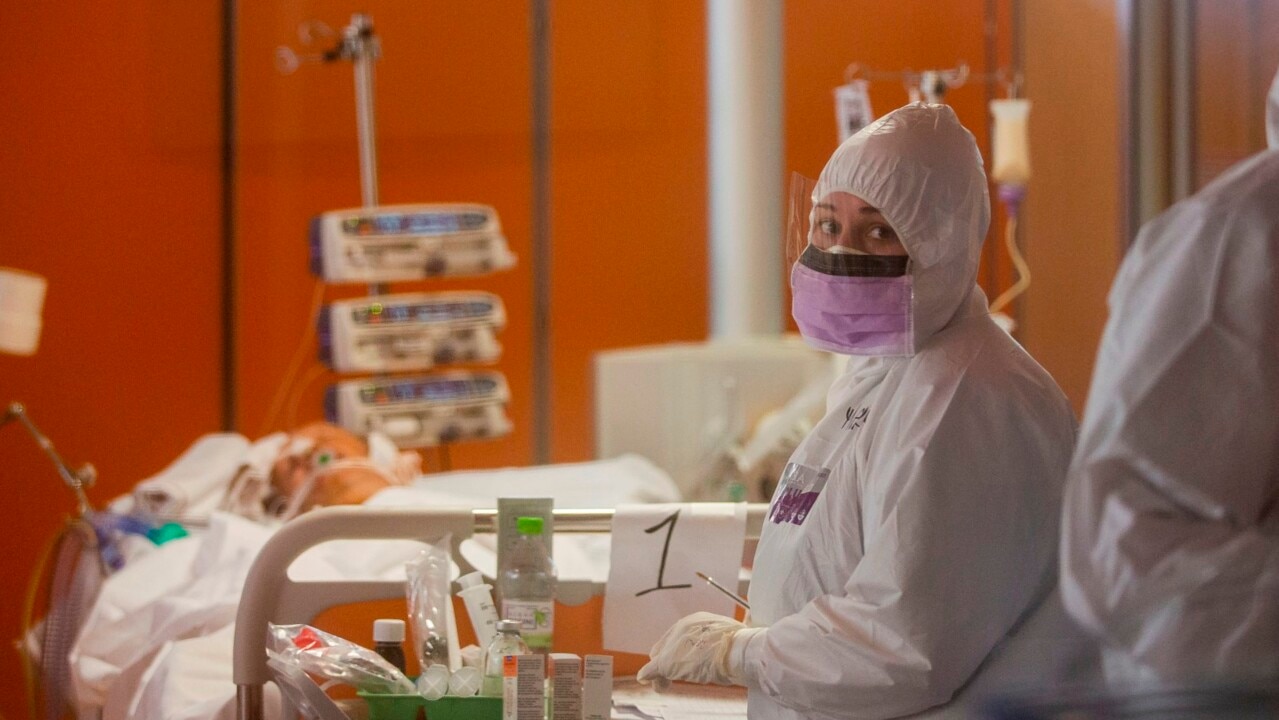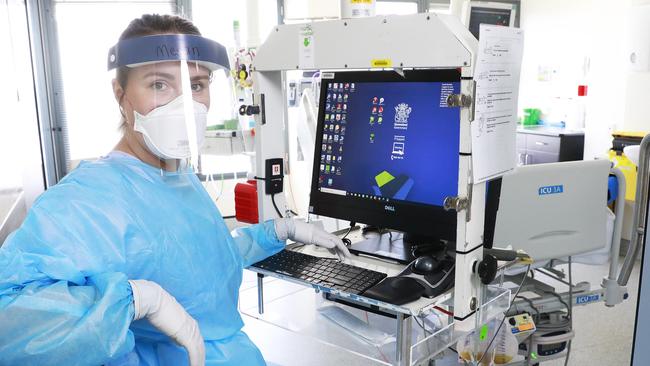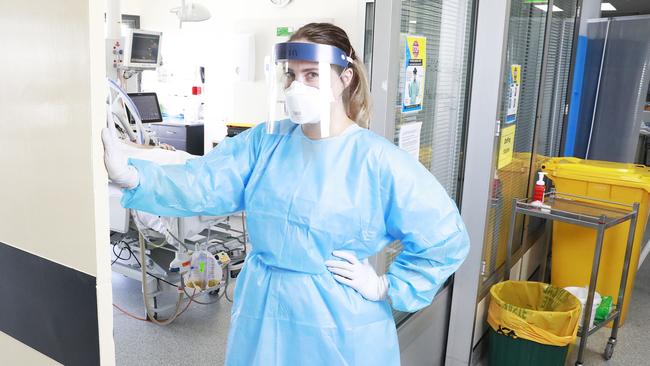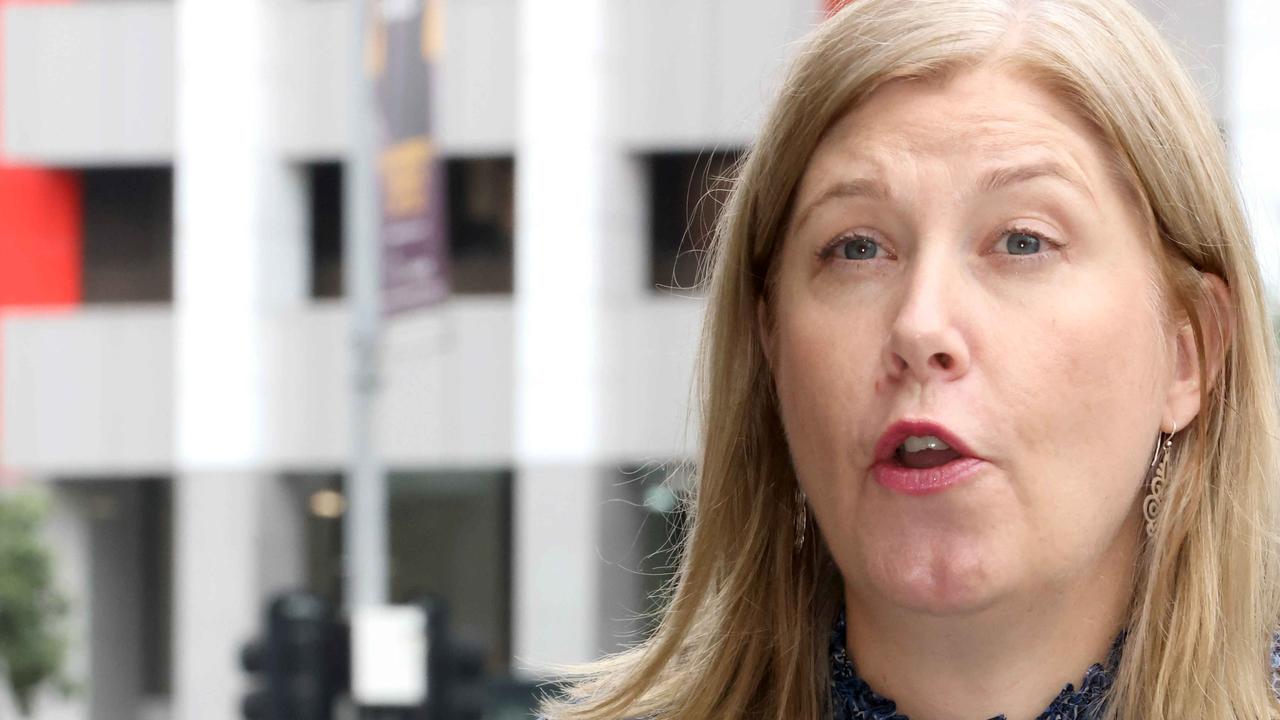What it’s like to be an ICU nurse helping the sick beat COVID-19
ICU nurses like Megan Davis are on the frontline in the battle against a deadly contagion, spending 12 hours a day sweltering in heavy protective equipment helping those infected to recover. This is how she spends her day.

QLD News
Don't miss out on the headlines from QLD News. Followed categories will be added to My News.
THE heroes on Queensland’s frontline are working 12-hour days in conditions most of us can only imagine – all to save lives, and help us win the battle against the coronavirus pandemic.
For intensive care nurse Megan Davis, the days are long and uncomfortable.
Dressed from head to toe in sweltering personal protective equipment, Ms Davis and other ICU nurses spend their 12-hour shifts tending to just one critical patient each at the Princess Alexandra Hospital.
Coronavirus Queensland: State records another six cases overnight
“Wearing the PPE, being really hot and being really sweaty … being in that environment, it gets very taxing,” she said.
“It’s something that we have to do for the safety of everyone.”
Shifts start at 7 o'clock in the morning or night, when intensive care nurses arrive at the hospital, get assigned patients and then take 10 minutes getting into their PPE gear.

Apart from three short breaks, the nurses don't leave the room, forgoing the basic comforts of a bathroom or a glass of water.
COVID-19 patients in intensive care are often intubated and unable to speak. Nurses face a long and solitary day tending to someone whose life hangs in the balance.
“You want to be able to talk to your patient, you want to be able to communicate with them,” Ms Davis said.
“One nurse to one patient, and the two of us will sit in that room for 12 hours.”
At present, there’s no miracle drug that cures COVID-19, meaning intensive care is more a process of tending to a patient’s symptoms, making sure they are frequently washed and provided with the best nutrition to fight off the disease.
“It’s just, we are here to support,” Ms Davis said.
“We can support your body through fighting it the best we can, but we can’t cure it.”
Among the most comforting tools in an ICU nurse’s arsenal was the trusty iPad, which Ms Davis said gave isolated patients the chance to connect with loved ones.
Ms Davis, who has worked as an intensive care nurse at the Princess Alexandra for eight years, said the early days of coronavirus were “quite a scary time,” as images beamed out of China, Europe and the US showed hospitals becoming overwhelmed with the sick.
But she said months of planning to cope with an expected surge in patients gave her confidence.
“We’re so lucky here in Australia, and Queensland, and at the PA so far, that we haven’t had those massive amounts of cases that we’ve seen overseas,” she said.
“Three patients was the max amount we had with COVID-19 in the ICU here, which was absolutely nothing on what they’ve had overseas.”
Ms Davis said a huge responsibility for Queensland’s lack of cases lay at the feet of the public.
“I’m really thankful the community has understood how serious this was, and everyone has taken it on board and done their social distancing” she said.

“I know that’s been really hard for some people, but we’re seeing massive benefits in the health sector from it.”
Nevertheless, the fear of a dreaded ‘second wave’ was something she worries about.
“I don’t want people to become complacent,” Ms Davis said.
“It’s a time to be alert, but not afraid.”
And despite the growing global pandemic, and fears Australia still has dark days ahead, Ms Davis remains convinced that a shift with the coronavirus is just like any other.
“We just want to do our part to help everyone.”
A DAY IN THE LIFE OF INTENSIVE CARE NURSE MEGAN DAVIS
5.30am: Wake up
6.15am: Head to work, sign in and get allocated a patient
7am: Handover from night nurse, takes 5-10 minutes to get into the PPE, then start taking care of patient
Throughout the day – monitor patient, turn patient from side to side, wash patient, make sure they have enough food. Update families on condition because they can’t visit, video conferencing between patient and family if possible.
About 10am: 30 minute breakfast break, drink water because you can’t drink in the ICU.
10.30am – 1pm: Care for patient
1pm: 30-minute Lunch
1.30-5pm: Care for patient
5pm: 20 minute break
5.20pm-7pm: Taking care of patient, finalising any patient care and giving wash to patient.
7pm-7.30pm: Handover to night nurse
7.30pm: Shower at work
By around 8pm: Leave for home
Have quick dinner then bed by 9.30pm



